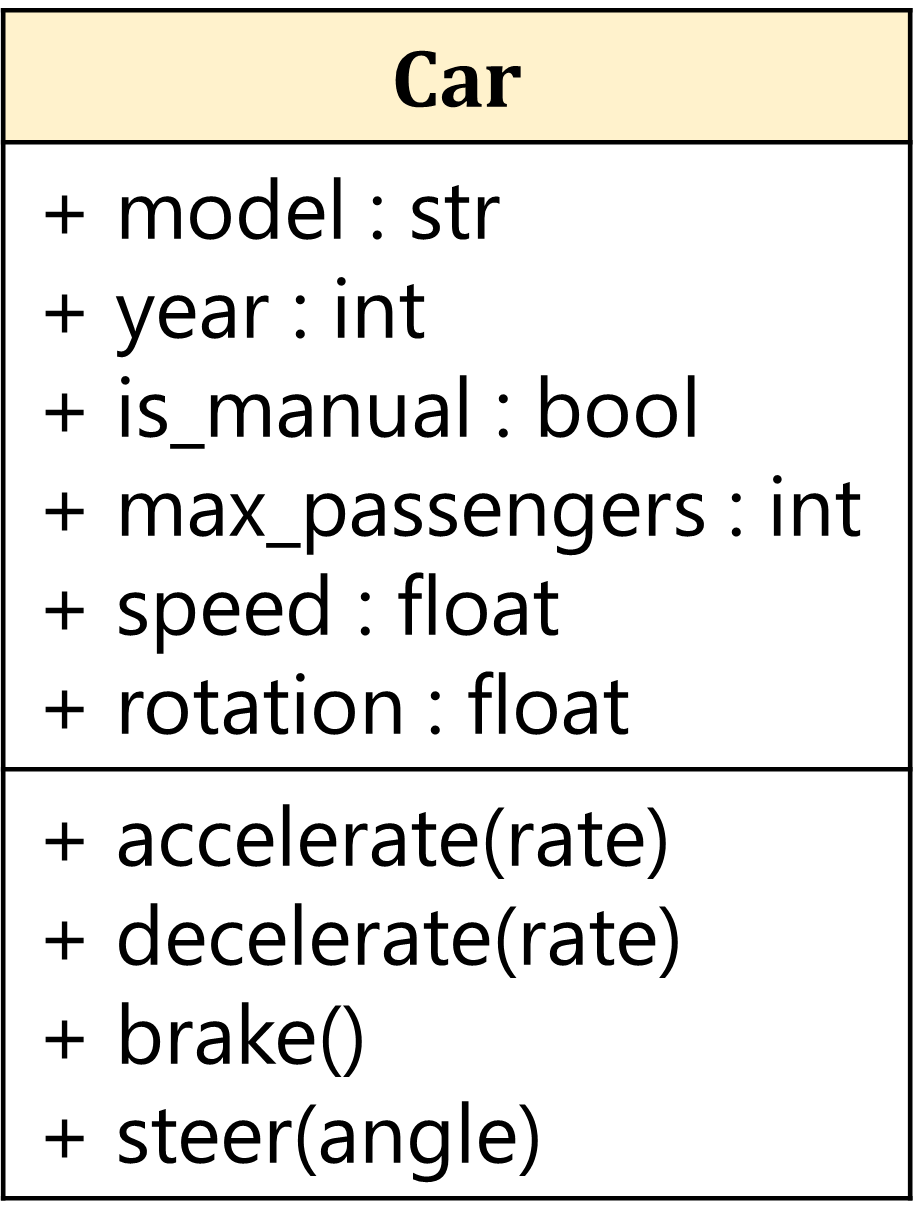Lesson 8
Making Objects the Main Star!
Chapter 6: Object methods
Exercise
Practice time!
Let’s extend our previous exercise on designing a Car object to incorporate methods.
Suppose that your passionate software analyst has now added methods to Car. Here is the updated class diagram.

Update your class definition for Car to incorporate the four methods:
accelerate()should take an input argumentrate, and increment thespeedattribute of the car by the givenrate. The value ofrateshould default to1if not given.decelerate()should take an input argumentrate, and decrement thespeedattribute of the car by the givenrate, up to a minimumspeedof0(speedcannot be negative). The value ofrateshould default to1if not given.brake()should set thespeedattribute of the car to0.steer()should take an input argumentangle, and add theangleto the currentrotationattribute of the car. The minimum value forrotationis-180, and maximum180. Sorotationshould be ‘clipped’ to-180if it is lower than-180, and clipped to180if it is greater than180.
Remember that the first parameter should always be self! I will not explicitly mention this in my instructions, but you should assume that you expect self to be there!
Sample usage
>>> my_car = Car("Audi A6", 2018, True, 6)
>>> my_car.accelerate()
>>> print(my_car.speed)
1.0
>>> my_car.accelerate(5)
>>> print(my_car.speed)
6.0
>>> my_car.decelerate()
>>> print(my_car.speed)
5.0
>>> my_car.decelerate(20)
>>> print(my_car.speed)
0.0
>>> my_car.accelerate(10)
>>> print(my_car.speed)
10.0
>>> my_car.brake()
>>> print(my_car.speed)
0.0
>>> my_car.steer(30)
>>> print(my_car.rotation)
30.0
>>> my_car.steer(200)
>>> print(my_car.rotation)
180.0
>>> my_car.steer(-200)
>>> print(my_car.rotation)
-20.0
>>> my_car.steer(-200)
>>> print(my_car.rotation)
-180.0
